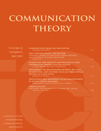
COMMUNICATION THEORY
Scope & Guideline
Illuminating the Dynamics of Human Interaction
Introduction
Aims and Scopes
- Interdisciplinary Communication Studies:
The journal covers a broad range of communication-related topics, integrating insights from various disciplines including sociology, psychology, political science, and media studies, fostering a comprehensive understanding of communication phenomena. - Theoretical Innovations:
Communication Theory emphasizes the development and critique of theoretical frameworks that explain communication processes, such as media effects, public sphere theory, and the role of technology in shaping communication. - Empirical Research:
The journal publishes empirical studies that investigate communication practices and their social implications, utilizing qualitative and quantitative methodologies to provide evidence-based insights. - Cultural and Global Perspectives:
There is a strong focus on cultural diversity and global perspectives in communication, exploring how different cultural contexts influence communication practices and media consumption. - Critical and Reflexive Approaches:
The journal encourages critical reflections on communication theories and practices, addressing issues of power, ethics, and social justice in communication.
Trending and Emerging
- Digital Communication and Technology:
A growing emphasis on digital communication, including the implications of social media, artificial intelligence, and digital propaganda, reflects the increasing relevance of technology in shaping communication practices. - Critical Communication and Social Justice:
There is a notable trend towards exploring critical perspectives on communication, particularly concerning issues of identity, race, and social justice, highlighting the role of communication in addressing societal inequalities. - Public Sphere and Civic Engagement:
Recent studies focus on the evolution of the public sphere in the digital age, examining how communication shapes civic engagement, public discourse, and political participation. - Disinformation and Misinformation:
The journal is increasingly publishing research on disinformation and misinformation, particularly how they affect public perception and communication strategies in contemporary media landscapes. - Ethics and Moral Frameworks in Communication:
Emerging themes include discussions on ethics in communication practice, exploring moral frameworks that guide communication in various contexts, including journalism and public relations.
Declining or Waning
- Traditional Media Effects Theories:
The journal has seen a decrease in publications centered around traditional media effects theories, as scholars shift their focus to more nuanced understandings of media influence in the context of digital and social media. - Static Models of Communication:
There is a noticeable decline in the use of static or linear models of communication, as the field increasingly embraces dynamic and contextual models that better capture the complexities of contemporary communication. - Historical Communication Studies:
Research focused solely on historical perspectives of communication has waned, giving way to studies that integrate historical insights with current issues and trends in communication.
Similar Journals
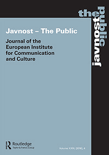
JAVNOST-THE PUBLIC
Exploring the Dynamics of Public DiscourseJAVNOST - THE PUBLIC is a prestigious academic journal that has established itself as a leading platform within the field of communication. Published by Routledge Journals, Taylor & Francis Ltd in the United Kingdom, this journal caters to researchers, professionals, and students interested in the multifaceted dynamics of public communication and societal engagement. With an impressive Q1 ranking in the Communication category as of 2023 and a Scopus ranking of #166/511, placing it in the 67th percentile, it is widely recognized for its rigorous research contributions and theoretical insights. The journal has been in continuous circulation since its inception in 1994, and it actively seeks to publish high-quality, empirical studies that explore the nuances of public discourse, media influence, and societal interactions. Though a traditional publication, JAVNOST - THE PUBLIC remains committed to advancing the field by offering valuable resources and knowledge crucial for addressing contemporary challenges in public communication.
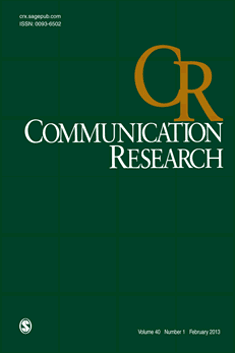
COMMUNICATION RESEARCH
Navigating the Complexities of Human Communication.COMMUNICATION RESEARCH, published by SAGE Publications Inc, stands as a premier journal in the fields of Communication and Linguistics, boasting an impressive impact factor that reflects its influential contributions to academic scholarship. Since its inception in 1974, this esteemed journal has provided rigorous, peer-reviewed research that delves into the dynamics of human communication, making it a vital resource for researchers, practitioners, and students alike. With a commendable ranking within the Q1 category for both Communication and Linguistics and consistently placed within the 99th percentile across Scopus ranks, COMMUNICATION RESEARCH is at the forefront of academic inquiry, fostering a deeper understanding of communication processes in diverse contexts. While not an Open Access journal, it offers extensive access options facilitating widespread dissemination of knowledge. Researchers can look forward to an engaging array of cutting-edge studies and theoretical advancements in forthcoming issues, making it an indispensable tool for those studying the complexities of language and communication.
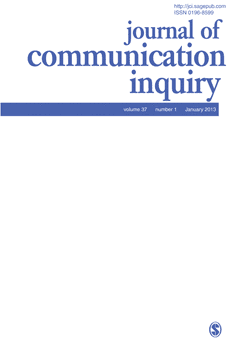
Journal of Communication Inquiry
Advancing Interdisciplinary Dialogue in Communication StudiesJournal of Communication Inquiry, published by SAGE PUBLICATIONS INC, is a premier interdisciplinary journal that serves as a vital platform for scholars and practitioners in the fields of communication, cultural studies, and the arts and humanities. With a rich history dating back to its inception in 1974, the journal has consistently upheld rigorous academic standards, reflected in its impressive rankings within the Q1 and Q2 quartiles across various disciplines according to the latest metrics. The journal's comprehensive scope encompasses theoretical and empirical research, catering to a diverse readership who are keen to explore contemporary communication issues and cultural dynamics. While the impact factor is not explicitly stated, the journal's Scopus ranks position it favorably within its categories, with notable percentiles that highlight its influence in the academic community. As an essential resource for researchers, professionals, and students alike, the Journal of Communication Inquiry invites contributions that advance the discourse surrounding communication practices and cultural phenomena, contributing to the ongoing dialogue in these evolving fields.
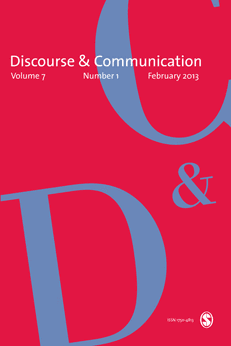
Discourse & Communication
Advancing the dialogue between communication and linguistics.Discourse & Communication, published by SAGE Publications Inc, stands at the forefront of interdisciplinary research, bridging the realms of Communication and Linguistics. Since its inception in 2007, this esteemed journal has consistently maintained a Q1 quartile ranking, underscoring its impact and relevance within the academic community, particularly with an impressive 89th percentile ranking in Social Sciences - Linguistics and Language and a notable 75th percentile in Social Sciences - Communication. The journal seeks to foster critical dialogue and innovative perspectives through empirical studies, theoretical contributions, and methodological advancements. Researchers, professionals, and students alike can benefit from its rich repository of knowledge and cutting-edge research, ensuring a robust platform for the exploration and dissemination of ideas in the field. With its dedicated focus on discourse analysis and communication studies, Discourse & Communication remains an essential resource for anyone engaged in the evolving landscape of social interaction and language use.

CIC-Cuadernos de Informacion y Comunicacion
Bridging Theory and Practice in Information StudiesCIC-Cuadernos de Informacion y Comunicacion is a leading academic journal published by the Universidad Complutense de Madrid, serving as a vital resource for scholars and practitioners in the fields of information and communication studies. Launched in 1995 as an Open Access journal, it provides an invaluable platform for disseminating innovative research and critical analysis related to communication theory, media studies, and information technology. With its focus on fostering interdisciplinary dialogue, CIC encourages submissions that explore contemporary challenges and advancements in the information landscape. Although the H-index and Scopus rankings are currently not specified, the journal’s commitment to excellence and accessibility positions it as an important contributor to academic discourse. The journal is based in Madrid, Spain, and aims to reach a global audience of researchers, professionals, and students dedicated to furthering knowledge in the rapidly evolving domains of communication and information sciences.

Canadian Journal of Communication
Exploring the Frontiers of Human InteractionCanadian Journal of Communication, published by University of Toronto Press Inc., serves as a vital conduit for scholarly discourse within the field of communication studies. With an ISSN of 0705-3657 and an E-ISSN of 1499-6642, this esteemed journal holds a Q2 ranking in the category of Communication according to 2023 metrics, reflecting its commitment to high-quality research and innovation. Located in Canada and covering converged years from 2016 to 2024, the journal provides a comprehensive platform for the exchange of ideas, critical analyses, and theoretical advancements that shape our understanding of communication in contemporary society. Although it does not currently offer open access, the journal’s influence is demonstrated by its position in Scopus, ranking #332 out of 511 in the Social Sciences Communication category. This publication is essential for researchers, professionals, and students seeking to deepen their knowledge in communication contexts and explore the intricate dynamics that define human interaction.
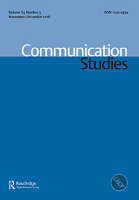
Communication Studies
Exploring New Frontiers in Communication ResearchCommunication Studies is a premier journal dedicated to advancing the field of communication, published by Routledge Journals, Taylor & Francis Ltd in the United Kingdom. With an ISSN of 1051-0974 and an E-ISSN of 1745-1035, this journal has established itself as a pivotal platform for scholarly work since its inception in 1989. As a member of the esteemed Q1 quartile in communication for 2023, it ranks within the top echelons of the Scopus database, placed at #106 out of 511 in social sciences communication, signaling its influential contribution in the field, with a striking 79th percentile ranking. The journal publishes original research, theoretical discussions, and critical reviews that address various aspects of communication processes and practices, making it invaluable for researchers, professionals, and students who wish to stay abreast of the latest developments. While it currently does not offer Open Access options, its extensive reach and rigorous peer-review process ensure the publication of high-quality, impactful research. For inquiries, the editorial office can be contacted at 2-4 Park Square, Milton Park, Abingdon OX14 4RN, Oxon, England.
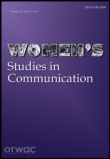
Womens Studies in Communication
Illuminating the Intersections of Gender and DialogueWomens Studies in Communication, published by Routledge Journals, Taylor & Francis Ltd, stands as a pivotal platform for scholars and practitioners in the fields of communication and gender studies. With an impressive history of publishing since 1977, this journal delves into the intricate intersections of gender and communication, fostering critical dialogue and innovative research. It currently holds a category quartile ranking of Q2 in both Communication and Gender Studies, reflecting its significant impact in these vital fields. With an ongoing commitment to exploring the nuances of women's voices and experiences in various communicative contexts, the journal provides an invaluable resource for understanding contemporary societal issues. While currently not available as an open-access publication, its adherence to high academic standards, evidenced by its Scopus rankings, making it an essential read for researchers, students, and professionals eager to enrich their understanding of gender dynamics in communication.
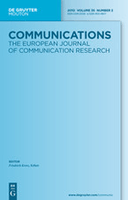
Communications-European Journal of Communication Research
Illuminating Insights in Communication PracticesCommunications-European Journal of Communication Research is a premier journal published by DE GRUYTER MOUTON, dedicated to fostering scholarly discourse in the field of communication studies. With a publication history spanning over four decades, from 1976 through to 2024, this journal serves as a vital resource for researchers and practitioners interested in the latest advancements and theoretical developments in communication. The journal is recognized for its rigorous peer-review process and has earned a commendable reputation, evidenced by its ranking in the Q2 quartile in both Arts and Humanities (miscellaneous) and Communication categories for 2023. Its Scopus rankings signify its relevance and impact, positioning it within the top quartile of the discipline's literature. Although not an open access journal, it provides access to a wide range of research that contributes significantly to the understanding of communication practices across diverse contexts. Scholars, professionals, and students alike will find a wealth of knowledge that not only sharpens their academic pursuits but also enriches practical applications in the communication landscape.
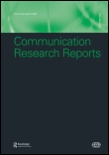
Communication Research Reports
Empowering Insights Through Rigorous ResearchCommunication Research Reports, published by Taylor & Francis Ltd, is an esteemed academic journal in the field of communication studies, known for its rigor and scholarly contribution since its inception in 1988. With an impressive Q1 ranking in the Communication category as of 2023, it stands out as a pivotal resource for researchers, professionals, and students alike. This journal focuses on disseminating high-quality empirical research and theoretical discussions that advance understanding in communication practices and dynamics. Although it does not operate under an Open Access model, its consistent publication continues to engage a global audience and supports the ongoing dialogue within the discipline. With its commitment to enhancing scholarly communication, Communication Research Reports is vital for those looking to stay abreast of cutting-edge developments in the social sciences, specifically within communication.